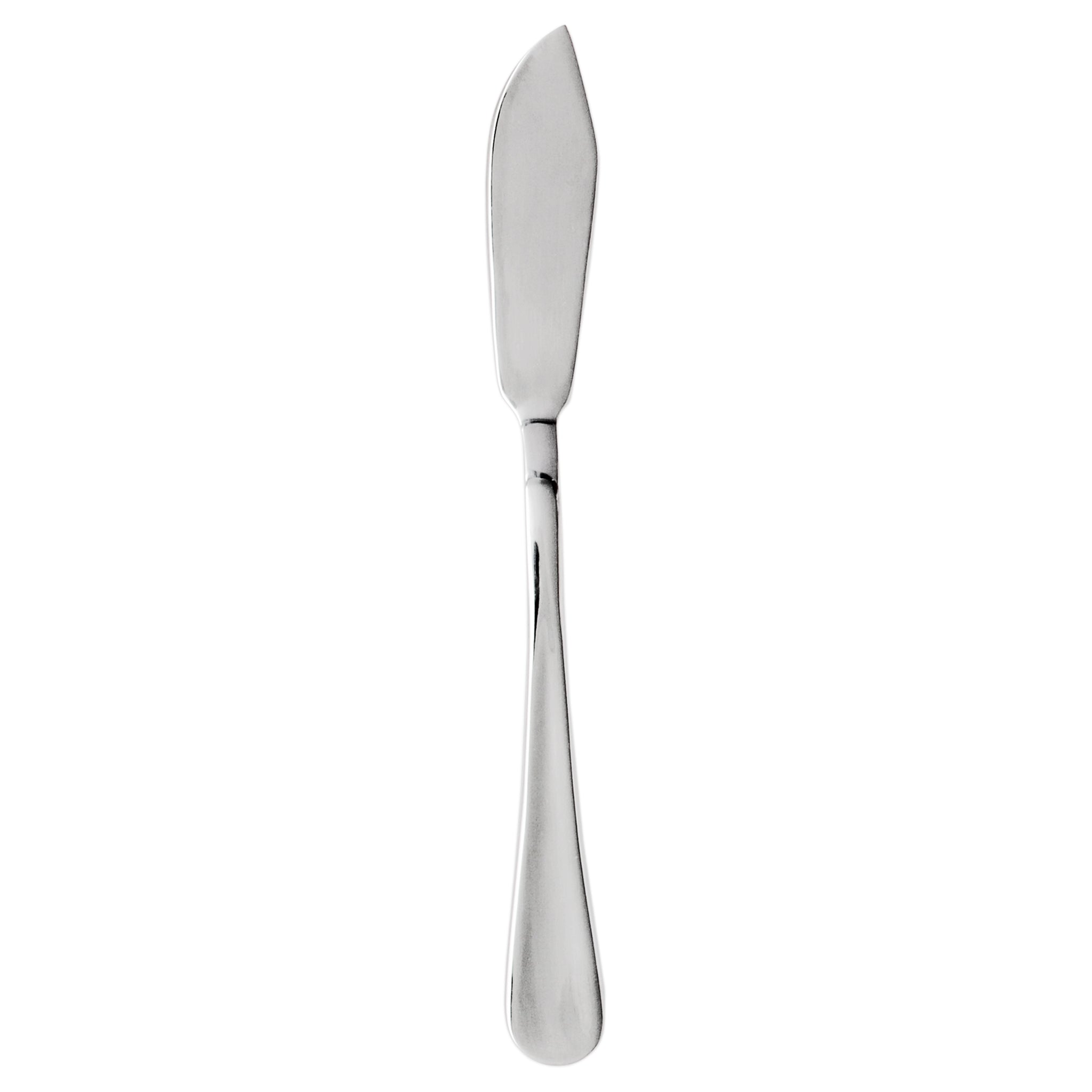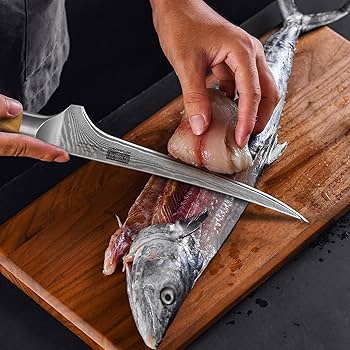7 common mistakes to avoid when using a fish knife
Wiki Article
The Ultimate Overview to Preserving Your Fish Knife for Long Life and Performance
Preserving a fish knife is essential for ensuring its long life and optimal efficiency. Appropriate care includes a collection of actions, including cleaning, honing, and storage space. Each stage contributes to the knife's efficiency throughout use. Comprehending these techniques can make a considerable distinction in the life-span of this essential device. Nonetheless, many users ignore crucial facets of upkeep that can lead to degeneration. What are these often-forgotten actions?Picking the Right Fish Knife for Your Demands
When selecting the ideal fish knife, what key functions should one take into consideration? The blade's versatility is critical, enabling accuracy while filleting various fish types (fish knife). A slim, narrow blade usually enhances ability to move, making it easier to browse around bones and skin. The product of the blade additionally plays a crucial duty; stainless steel provides toughness and rust resistance, vital for regular exposure to waterAdditionally, the manage's layout needs to not be neglected. It should give a comfy hold, ideally including non-slip materials that guarantee safety during usage. The knife's length is another variable; much shorter blades can provide far better control, while longer blades might be helpful for larger fish. Weight is important; a healthy knife allows for prolonged use without exhaustion. By thoroughly considering these features, one can pick a fish knife that meets details requirements for effective fish prep work.
Proper Cleansing Techniques After Each Usage
Proper cleansing techniques after each usage are vital for maintaining the durability and efficiency of a fish knife. Promptly after filleting fish, it is vital to rinse the knife under cozy water to remove ranges, slime, and any type of recurring fish juices. Using a soft sponge or cloth, the individual needs to gently scrub the blade and manage, paying unique attention to any type of gaps where particles may build up. Stay clear of making use of abrasive materials that might scratch the blade's surface. After cleaning, the knife needs to be thoroughly dried with a clean towel to stop moisture-related damages. If the knife has a wood take care of, using a food-safe mineral oil periodically can assist keep its stability. Keeping the knife in an assigned sheath or magnetic strip can better shield it from unintended damages and guarantee it continues to be tidy and all set for future usage. Regular adherence to these cleaning methods will improve the knife's life expectancy and efficiency.Sharpening Your Fish Knife: Tools and Methods
Developing a fish knife is a vital procedure that improves its performance and guarantees clean cuts while filleting. To achieve optimum intensity, a number of tools can be utilized. A whetstone is thought about one of the most reliable techniques, permitting specific control over the developing angle. Individuals ought to damp the rock and preserve a constant 20-degree angle while sliding the blade across its surface area.A sharpening pole can be utilized for regular upkeep, realigning the blade's side without eliminating material. For convenience, electrical sharpeners provide a quick option, though they may not provide the exact same level of finesse as manual techniques.
No matter the selected approach, it is necessary to finish with a natural leather strop to polish the side, guaranteeing a razor-sharp coating. Regular sharpening not just prolongs the life of the fish knife however also improves the total efficiency of the filleting process.
Saving Your Fish Knife for Optimum Security
After sharpening a fish knife, interest should turn to its storage to keep the blade's honesty and performance. Correct storage is important for stopping dulling, rust, and damage. Ideally, a fish knife must be saved in a protective sheath or knife roll, which guards the blade from call with environmental aspects and various other utensils (fish knife). Magnetic strips can likewise be reliable, enabling safe and available storage space while maintaining the blade safe
Normal Upkeep Routines to Comply With
A constant upkeep regimen is vital for maintaining the functionality and appearance of a fish knife. Routine cleansing after each use is crucial; washing the blade with cozy water and light soap removes any type of residue. It is suggested to dry the knife thoroughly to stop rust. Regularly, a light application of food-safe mineral oil can assist shield the blade and maintain its sheen.
Saving the fish knife in a protective situation or sheath protects against accidental damage and maintains it prepared for usage. Following these upkeep regimens will significantly boost the long life and effectiveness of the fish knife.
Frequently Asked Inquiries
Can I Utilize My Fish Knife for Other Sorts Of Fish?
Yes, a fish knife can be made use of for other kinds of fish. Nevertheless, the effectiveness might vary depending on the knife's design and the certain fish being refined, affecting performance and accuracy during prep work.What Products Are Finest for a Fish Knife Blade?
Stainless steel and high-carbon steel are thought about the finest materials for a fish knife blade. Stainless-steel offers deterioration resistance, while high-carbon steel supplies remarkable sharpness and edge retention, important for efficient fish prep work.Exactly how Typically Should I Replace My Fish Knife?
A fish knife should generally be replaced every three to 5 years, relying on usage and maintenance. Regular assessment for signs of wear or damage can also aid figure out the correct time for substitute.Are There Details Brand Names Understood for High Quality Fish Blades?
Specific brand names, like Wüsthof, Victorinox, and Rapala, are renowned for producing high-grade fish knives. These brand names are identified for their toughness, sharpness, and ergonomic styles, making them preferred options among fishing enthusiasts and specialists alike.check here
Can Temperature Impact My Fish Knife's Performance?
Temperature can dramatically impact a fish knife's efficiency. Extreme warm may trigger blade products to warp, while cool problems can lead to brittleness. Preserving an optimum temperature is crucial for protecting the knife's capability and sturdiness.The knife's size is an additional factor; shorter blades can use far better control, while longer blades might be helpful for larger fish. Instantly after filleting fish, it is critical to rinse the knife under cozy water to eliminate ranges, sludge, and any residual fish juices. After honing a fish knife, focus has to transform to its storage space to maintain the blade's honesty and performance. Preferably, a fish knife need to be saved in a safety sheath or knife roll, which guards the blade from call with various other tools and ecological factors. Yes, a fish knife can be made use of for various other kinds of fish.
Report this wiki page